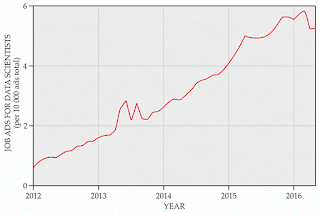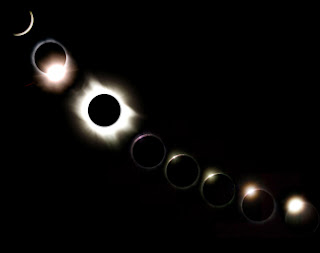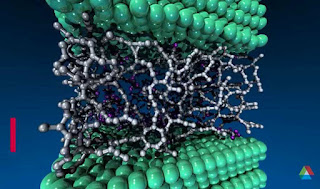 |
| James O'Brien for Quanta Magazine |
Topics: Cosmology, History, Modern Physics, Richard Feynman
Horror vacui: "nature abhors a vacuum." (attributed to Aristotle)
Richard Feynman looked tired when he wandered into my office. It was the end of a long, exhausting day in Santa Barbara, sometime around 1982. Events had included a seminar that was also a performance, lunchtime grilling by eager postdocs, and lively discussions with senior researchers. The life of a celebrated physicist is always intense. But our visitor still wanted to talk physics. We had a couple of hours to fill before dinner.
I described to Feynman what I thought were exciting if speculative new ideas such as fractional spin and anyons. Feynman was unimpressed, saying: “Wilczek, you should work on something real.” (Anyons are real, but that’s a topic for another post.)
Looking to break the awkward silence that followed, I asked Feynman the most disturbing question in physics, then as now: “There’s something else I’ve been thinking a lot about: Why doesn’t empty space weigh anything?”
Feynman, normally as quick and lively as they come, went silent. It was the only time I’ve ever seen him look wistful. Finally he said dreamily, “I once thought I had that one figured out. It was beautiful.” And then, excited, he began an explanation that crescendoed in a near shout: “The reason space doesn’t weigh anything, I thought, is because there’s nothing there!”
Vacuum, in modern usage, is what you get when you remove everything that you can, whether practically or in principle. We say a region of space “realizes vacuum” if it is free of all the different kinds of particles and radiation we know about (including, for this purpose, dark matter — which we know about in a general way, though not in detail). Alternatively, vacuum is the state of minimum energy.
Intergalactic space is a good approximation to a vacuum.
Void, on the other hand, is a theoretical idealization. It means nothingness: space without independent properties, whose only role, we might say, is to keep everything from happening in the same place. Void gives particles addresses, nothing more.
Aristotle famously claimed that “Nature abhors a vacuum,” but I’m pretty sure a more correct translation would be “Nature abhors a void.” Isaac Newton appeared to agree when he wrote:
...that one Body may act upon another at a Distance thro’ a Vacuum, without the Mediation of any thing else, by and through which their Action and Force may be conveyed from one to another, is to me so great an Absurdity, that I believe no Man who has in philosophical Matters a competent Faculty of thinking, can ever fall into it.
But in Newton’s masterpiece, the Principia, the players are bodies that exert forces on one another. Space, the stage, is an empty receptacle. It has no life of its own. In Newtonian physics, vacuum is a void.
Quanta Magazine: How Feynman Diagrams Almost Saved Space, Frank Wilczek











